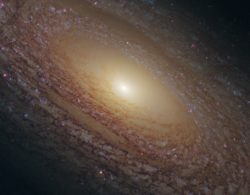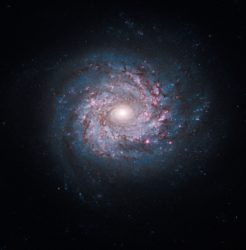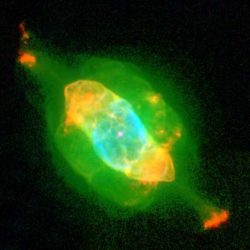Astronomy Picture of the Week – Spiral Galaxy NGC 2841
This view of the majestic disk of stars and dust lanes of the spiral galaxy NGC 2841 was taken by NASA’s Hubble Space Telescope in 2010. The galaxy lies 46 million light-years away in the constellation of Ursa Major. Credit: NASA, ESA, and the Hubble Heritage (STScI/AURA)-ESA/Hubble Collaboration Acknowledgments: M. Crockett and S. Kaviraj (Oxford University, UK), R. O’Connell (University of Virginia), B. Whitmore (STScI), and the WFC3 Scientific Oversight Committee
Astronomy Picture of the Week – Spiral Galaxy NGC 3982
This spiral galaxy, called NGC 3982, looks similar to our own galaxy but it is much smaller. NGC 3982 spans about 30,000 light-years which makes it roughly one-third of the size of the Milky Way galaxy. It is located about 68 million light-years away in the constellation Ursa Major. This image is composed of pictures taken by the Hubble Space Telescope’s Wide Field Planetary Camera 2 (WFPC2), the Advanced Camera for Surveys (ACS), and the Wide Field Camera 3 (WFC3) between March 2000 and August 2009. Image Credit: NASA, ESA, and the Hubble Heritage Team (STScI/AURA)
Astronomy Picture of the Week – Interacting Spiral Galaxies NGC 2207 and IC 2163
This near-collision has been caught in a photo by NASA's Hubble Space Telescope. Two spiral galaxies pass by each other like majestic ships in the night. They are located in the direction of the constellation Canis Major.
Astronomy Picture of the Week – NGC 1999 Nebula
This photo of nebula NGC 1999 was taken by the Hubble Space Telescope in December 1999. It is a good example of a reflection nebula. Just like fog around a street lamp, a reflection nebula shines only because a light source illuminates its dust and the nebula does not emit any visible light of its own. The main light source of this nebula is a recently formed star, visible in this photo near the center. This young star is cataloged as V380 Orionis, and its white color is due to its high surface temperature of about 10,000 degrees Celsius (nearly twice that of our own Sun). Its mass is estimated…
Astronomy Picture of the Week – Nebula NGC 7009
This odd greenish nebula, called NGC 7009 or the Saturn Nebula, is the result of a star similar to our sun going nova. Since then, a bright new star was born from the gases of its predecessor. It can be seen in the center of the nebula, inside the bluish sphere of gas. The nebula is located 1,400 light-years away in the constellation of Aquarius. The picture was taken by the Hubble Space Telescope. Image Credits: NASA and Hubble Space Telescope





